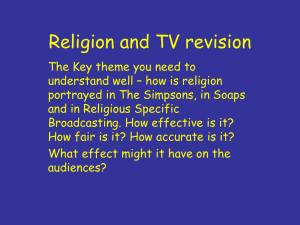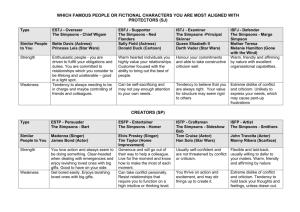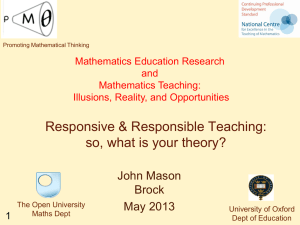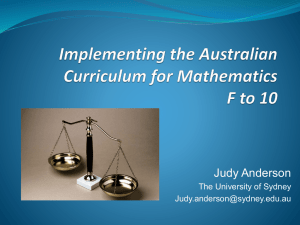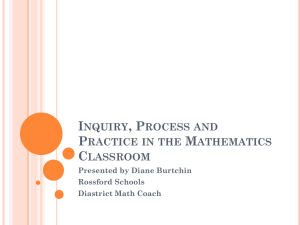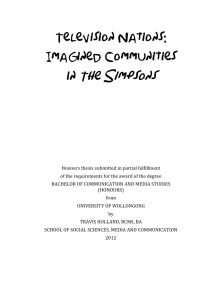The Simpsons and their mathematical secrets
advertisement
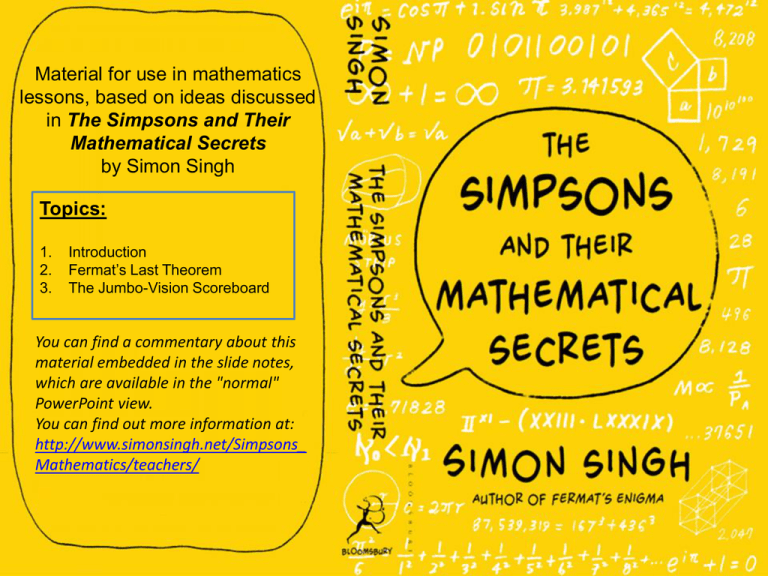
The Simpsons and their mathematical secrets Material for use in mathematics lessons, based on ideas discussed in The Simpsons and Their Mathematical Secrets by Simon Singh Topics: 1. 2. 3. Introduction Fermat’s Last Theorem The Jumbo-Vision Scoreboard You can find a commentary about this material embedded in the slide notes, which are available in the "normal" PowerPoint view. You can find out more information at: http://www.simonsingh.net/Simpsons_ Mathematics/teachers/ The Simpsons and their mathematical secrets Legal Notice: The Simpsons TM and copyright Twentieth Century Fox and its related companies. This presentation is for educational use only. In offering this presentation, we note that we do not benefit financially in any way. The images on these pages were taken from episodes of The Simpsons that are copyrighted by Twentieth Century Fox. Please do not distribute image files, except for use in the classroom. Disclaimer: This presentation, and any content contained relating to The Simpsons are not specifically authorized by Fox. Believe it or not, the writers of The Simpsons have been drip-feeding morsels of mathematics into the series over the last twenty-five years; indeed, there are so many mathematical references in The Simpsons that they could form the basis of an entire university course. The Simpsons and their mathematical secrets Using specific episodes as jumping off points - from 'Bart the Genius' to 'Treehouse of Horror VI' – this presentation reveals just some of the mathematics hidden in The Simpsons. You can find out more in The Simpsons and Their Mathematical Secrets, written by Simon Singh. His book introduces readers to The Simpsons' brilliant writing team - the likes of David X. Cohen, Ken Keeler, Al Jean, Jeff Westbrook, and Stewart Burns - who are not only comedy geniuses, but who also hold advanced degrees in mathematics. 1. Introduction Bart the Genius (1990) MoneyBART (2010) 2. Fermat’s Last Theorem Wizard of Evergreen Terrace (1998) Wizard of Evergreen Terrace (1998) Pythagoras’ equation has an infinite solutions x2 + y 2 = z 2 Fermat’s equations have no solutions x3 + y 3 = z 3 x4 + y 4 = z 4 x5 + y 5 = z 5 : xn + y n = zn n, any number bigger than 2 Wizard of Evergreen Terrace (1998) Wizard of Evergreen Terrace (1998) 3,98712 + 4,36512 = 4,472.0000000071...12 Treehouse of Horror VI (1995) The writer who put Fermat’s last theorem into two episodes of The Simpsons is David X. Cohen. He has a degree in physics, a masters in computer science and has published mathematical research papers on pancake sorting. You can find out the complete story of Fermat’s last theorem in Simon Singh’s book. Or you can watch his BBC film about Fermat’s last theorem on YouTube. https://www.youtube.com/watch?v=E7Bqx65liIE These two Numberphile videos by Simon Singh are relevant to Fermat’s last theorem & The Simpsons and are available on YouTube. The Simpsons and their mathematical secrets Homer Simpson vs Pierre de Fermat https://www.youtube.com/watch?v=ReOQ300AcSU Fermat’s Last Theorem https://www.youtube.com/watch?v=qiNcEguuFSA 3. The Jumbo-Vision Scoreboard Marge + Homer Turn a Couple Play (2006) The Plot Tabitha Vixx is married to baseball star Buck Mitchell. AfterHomer and Marge help the couple to repair their marriage, Tabitha appears on the giant stadium screen to declare her love for Buck. At the same time, a question and three numbers appear on the screen. Were these numbers plucked out of the air or did the writers pick them for their mathematical qualities? 8,191 • A prime • Mersenne •2 – 1 •2 – 1 p 13 • Ten largest primes are Mersenne 8,128 • Perfect • 6 = 3 +2+1 • 28 = 14 + 7 + 4+2+1 • 496 • Same no. of Mersennes & even perfects 8,208 84 + 24 + 04 + 84 = 4,096 + 16 + 0 + 4,096 = 8,208 371=33+73+ 13 • Narcissistic 115,132,219,018, 763,992,565,095, 597,973,971,522, 401 For more mathematics… • Read Martin Gardner’s great books • Watch Vi Hart videos • Watch Numberphile videos
